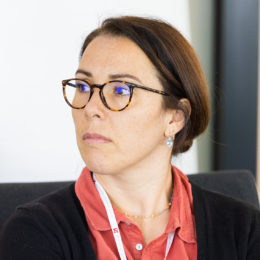TECHNOPREGYPT investigates modes of ceramic production in Predynastic Egypt (4th millennium BCE) with the aim of understanding how technological choices were affected by the process of state formation and, in doing so, move forward current scholarship on the process itself.
Jade Bajeot
During the first half of the 4th mill. BCE, Egypt was characterised by the presence of three main cultural horizons distinguished by a different material culture, namely the Naqada, the Nubian, and the Lower Egyptian Cultures. Their mutual interaction grew over time probably under the influence of the Naqadans and the most evident manifestation of these events is the homogenization of the appearance of pottery, stone artefacts, flint tools etc. throughout Egypt. At the end of this process Egypt is unified, the production of ceramics is the same throughout the country and Pharaonic Egypt begins. To date, however, the dynamics underlying the state formation process are not yet clear.
The well-developed typological studies, that classify ceramics on the basis of shapes and decorations, have allowed for an understanding of broad social changes when the latter were already accomplished and manifest in pottery production. What we need now is to track down the roots of these changes, and we will do it through the technological approach that permits to investigate the social dimension of pottery manufacture. Two identical pots with the same aspect can be realised using two completely different technics (e.g., pinched coils, crushed coils, beaten clay slabs, moulding, etc.). The adoption of a specific technique or a combination of techniques and its transmission from generation to generation, from tutor to apprentice, is strictly linked to the cultural identity of a group and forms the basis for the formation of technical traditions. The identification of the technical traditions of the Predynastic Cultures will therefore allow to better define them and then follow their developments and interactions over time.
The first objective of the project will be therefore the identification of the technical tradition of the Naqada Culture and, for the first time of the Nubian Culture and of eventual other underrepresented groups present in the Nile Valley. Four important corpuses will be analysed: that collected by the Aswan-Kom Ombo Archaeological Project and stored in Egypt, and those kept in the Egyptian Museum of Turin, in the National Archaeological Museum of France, and in the Archaeological Museum of Krakow. Constituted by a large sample of sites representing Middle Egypt and the south of Upper Egypt, these collections cover the whole timespan that will be taken into consideration in this project: from Naqada I to the beginning of the Old Kingdom (4th mill. BCE–beginning of the 3rd mill. BCE). The entire manufacturing processes will be reconstructed, from clay paste preparation to firing, and they will be integrated with the typological classifications. This will be made through the observation of diagnostic manufacturing macro and micro traces found on the surfaces of pots and on the sections of sherds, that will be interpreted by referring to ethnographic and experimental reference data and classified and classified according to most updated criteria (as established by V. Roux). This methodology will be complemented with thin section analysis and X-Rays microtomography, two cutting-edge analysis that will allow to obtain a deeper knowledge of the internal structure of ceramic. In particular, X-Rays microtomography is a truly innovative analysis, which ensures excellent results, and since it is non-destructive it is perfect for working on museum collections.
The second objective of the project will focus on the interpretation of the data obtained to establish: 1. How was ceramic production organised (e.g., household and/or workshop); 2. How these technical traditions interacted over time; 3. Which one, if any, was the predominant one when the manufacturing system became centralised; or 4. If a new manufacturing process was developed for the occasion and if so, how; and 5. To what extent the system was centralised and whether domestic productions survived alongside centralised ones. These aspects will be key for understanding the extent of political involvement in the pottery production modes.
Objective 3 will compare the results with those previously obtained by the principal investigator of the project for the Nile Delta to see differences and commonalities between these two regions, how the process of homogenisation of pottery throughout Egypt manifests itself at both ends of the country, and its political and social implications.
The adoption of the technological approach to answer broad anthropological questions is absolutely pioneering in the field of Predynastic Egypt. Its bottom-up approach allowing to render the picture of an entire community is also innovative. Until recently, in fact, most of the studies have focused on the elites, and in particular on funerary contexts, being this the subject on which we have the most data. The results, however, offer a partial view of the phenomena.
The outcomes of the TECHNOPREGYPT project are three-fold: the creation of a new theoretical model with great potential for moving forward our current understanding of Predynastic societies and state formation process in Egypt and become an important comparative instrument capable of influencing cognate disciplines within the broader umbrella of Anthropological Archaeology as well. The production of brand-new raw data that will be made available to other scholars. The diffusion of the technological approach in the field of Predynastic and Dynastic Egypt.
Project details
Project title: Ceramic technology and the socio-political environment of Predynastic Egypt
Principal Investigator: dr Jade Bajeot
Host institution: Institute of Mediterranean and Oriental Cultures of the Polish Academy of Sciences
Project duration: 01.10.2022 – 30.09.2024
Project’s website: www.technopregypt.iksio.pan.pl/index.php

